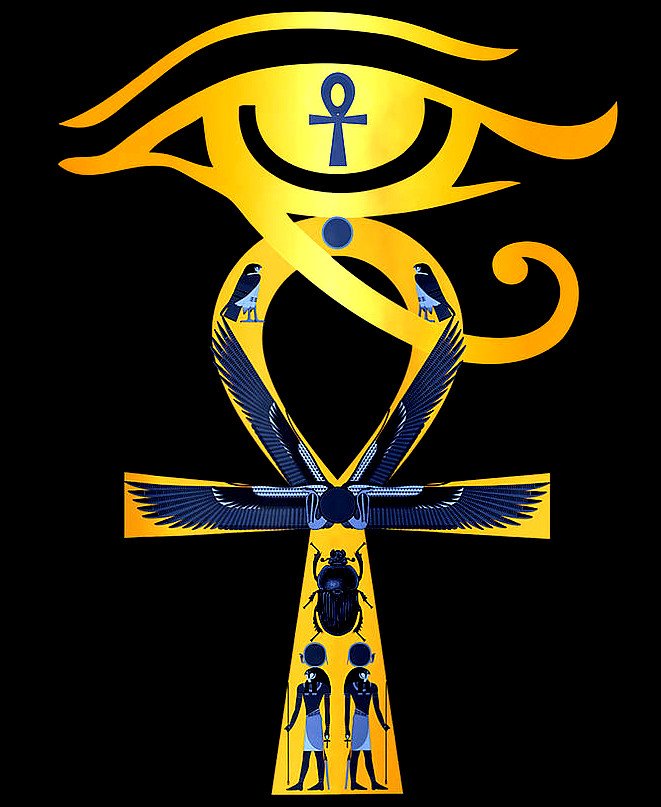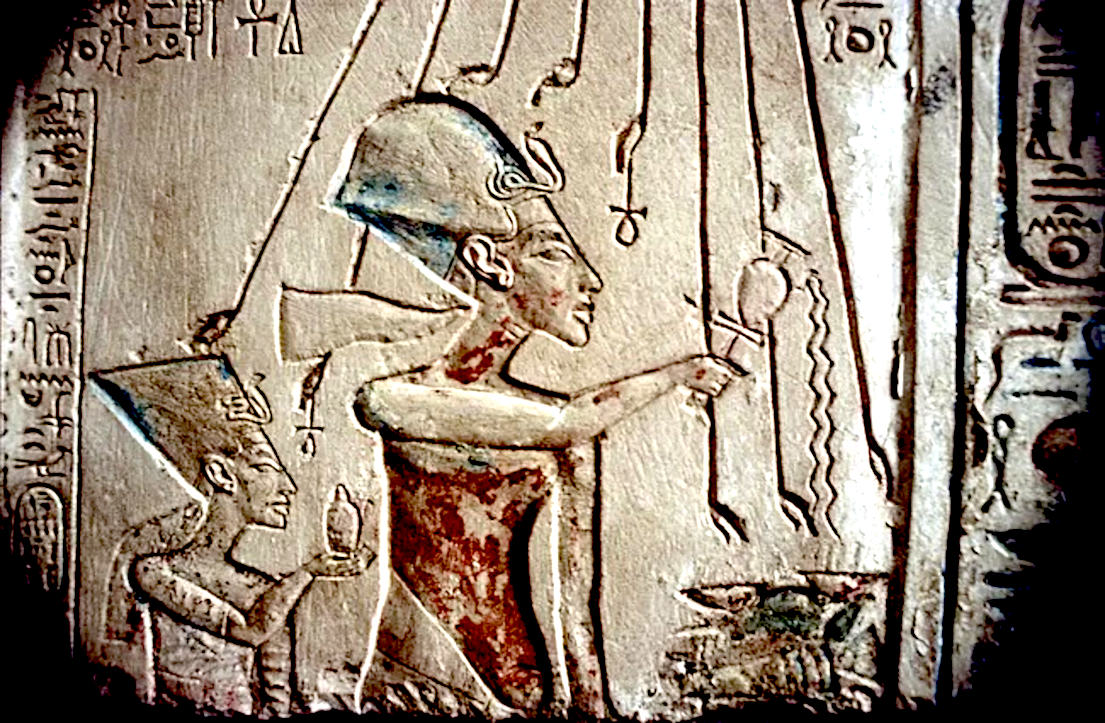
Ancient
Egyptian Ankh and Eye of Horus
The 'ankh' is an oval or point-down teardrop set atop a T shape. The origin of this image is highly debated. Some have suggested that it represents a sandal strap, although the reasoning behind such a use is not obvious. Others point out the similarity with another shape known as a knot of Isis (or a tyet), the meaning of which is also obscure.
The most commonly repeated explanation is that it is a union of a female symbol (the oval, representing the vagina or uterus) with a male symbol (the phallic upright line), but there's no actual evidence supporting that interpretation.

WHAT DOES IT SYMBOLIZE?
The Egyptian cross, also known as Ankh, was originally an Egyptian hieroglyph used to represent the word “life”. By extension, this cross became primarily a symbol of life.
Not unlike the Swastika
in other religions.
This cross was also placed on the lips of dead kings, bearing in mind that according to the mentality of ancient Egypt, death did not mean the end, but was merely a transition to the afterlife, to eternal life.
As is usual with many symbols of religious or spiritual origin, there is no single meaning for this symbol. Throughout history, this symbol and its variations have been used by different cultures and religions that have given it different meanings.
Among the Egyptians, it was mainly a symbol of life or immortality. In this sense, it also had a certain relationship with death and the rites associated with death.
The symbol of the Ankh has also been interpreted as a symbol of balance between opposing forces, for example, between masculinity and femininity. It can also represent joy, energy, and fertility.
One of the interpretations of the meaning of this symbol relates it to sexual union and therefore to fertility and life. This allows us to understand this symbol not only as a symbol of present life but also as a symbol of future life and immortality.
There is another theory, which related the T, of the lower part of the cross, with male sexual attributes, while the upper part, the handle of the cross, the uterus or the woman’s pubis, symbolizing the reconciliation of the opposites, unity between both sexes and above all, reproduction and therefore, the cycle of life.

The ankh symbol - sometimes referred to as the key of life or the key of the
Nile
- is representative of eternal life in Ancient
Egypt. Created by Africans long ago, the ankh is said to be the
first - or original - cross. The ankh is often shown in the hands of important Egyptian figures, such as pharaohs and kings, preserving their immortality. Moreover, the ankh is commonly depicted in temples and in the grasp of major Egyptian gods such as
Osiris,
Isis, and
Ra. It could also have a more physical connotation: the ankh may represent
water,
air, and the sun, which were meant to provide and preserve life in
Ancient Egyptian culture.
Ankhs were traditionally placed in sarcophagi to ensure life after
death. While the ankh is a widely known hieroglyph. Because the ankh shows similarities to the Knot of Isis, some speculate that the ankh and the Knot of Isis represent the same thing: an intricate bow. Other theories claim that the ankh could signify the cohesion of heaven and earth.
REFERENCE
https://www.cleopatraegypttours.com/travel-guide/the-egyptian-ankh-symbol-meaning/
